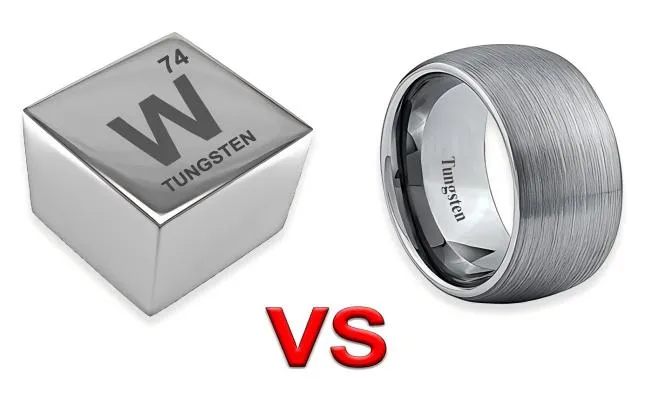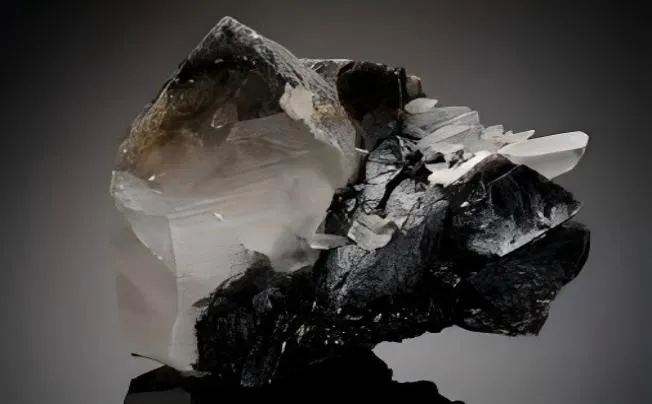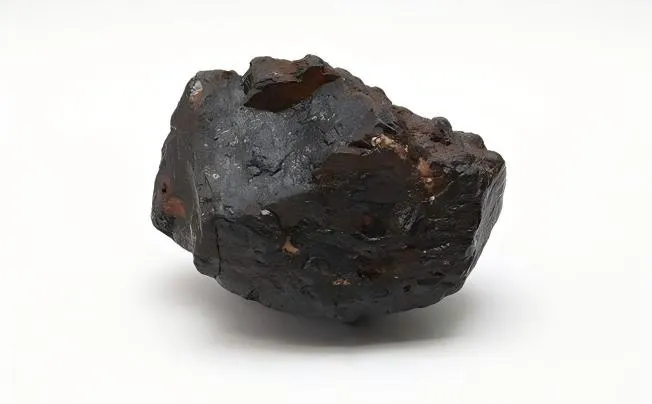Known primarily for its unrivaled density and high melting point of approximately 3,422 degrees Celsius (6,192 degrees Fahrenheit), tungsten is one of the toughest materials on Earth.
Tungsten in Jewelry
The Rise of Tungsten Carbide Rings
Tungsten carbide, an alloy comprised of tungsten and carbon, possesses a hardness that ranks second only to diamonds on the Mohs scale of mineral hardness. This means that tungsten carbide rings are extraordinarily resistant to scratches and daily wear, making them an ideal choice for those who lead active lifestyles or desire jewelry that stands the test of time.
The aesthetic appeal of tungsten carbide rings plays a significant role in their popularity. These rings come in various finishes—such as polished, brushed, or matte—and can be paired with precious metals or adorned with gemstones for added flair.
Furthermore, many couples are drawn to the symbolism embodied by tungsten's enduring strength; it represents unyielding love and commitment—a fitting metaphor for the bond shared between partners. Additionally, while affordability may also factor into the increasing favorability of tungsten carbide rings compared to traditional gold or platinum options, it is essential not to underestimate their quality. Made from high-performance materials designed for long-lasting durability without sacrificing aesthetics, these rings offer couples both value and style.
Adornments Reimagined: Tungsten Necklaces, Bracelets, and Earrings
One notable attribute contributing to the allure of tungsten jewelry is its ability to retain polish over time without dulling—a quality especially desirable in necklaces and bracelets often exposed to skin oils or environmental factors. These accessories present an opportunity for self-expression while maintaining their luster through daily wear—a perfect harmony between practicality and artistry. When fashioned into pendants or linked chains adorned with gemstones such as black diamonds or sapphires set within rich metallic frames forged from pure tungsten alloys, the result is breathtakingly dramatic yet elegantly understated.
Moreover, there’s something inherently modern about using materials traditionally associated with industrial applications in personal adornment; this juxtaposition creates intrigue among fashion enthusiasts who admire pieces embodying both strength and sophistication simultaneously.
Tungsten in Electronics
Tungsten in Light Bulb Filaments
Tungsten has a long and illustrious history when it comes to illuminating our world. The use of tungsten in light bulb filaments dates back to the early 20th century when it was discovered that tungsten's high melting point and durability made it the perfect material for creating a glowing filament that could withstand the heat produced by electric current. This breakthrough revolutionized the lighting industry, paving the way for more efficient and longer-lasting light bulbs that have become an indispensable part of our everyday lives.
The incandescent light bulbs we use today still rely on tungsten filaments to produce light through resistance heating. When electricity passes through the filament, it encounters resistance, causing the filament to heat up and emit visible light.
Tungsten's unique properties, including its high tensile strength and melting point of over 3,400 degrees Celsius, allow these filaments to operate at temperatures that would cause other materials to quickly degrade or melt. As a result, tungsten remains the go-to choice for manufacturers looking to create reliable and energy-efficient lighting solutions.
Tungsten Components in Electronic Devices
While most people are aware of tungsten's role in light bulbs, its presence in electronic devices often goes unnoticed. Smartphones, laptops, and other gadgets that we rely on daily actually contain various components made with tungsten alloys.
One common application is in electrical contacts within these devices, where tungsten's high conductivity and resistance to arc erosion make it an ideal material for ensuring efficient power transfer and longevity of electronic circuits. Moreover, some electronic components, like microprocessors or integrated circuits, incorporate thin layers of tungsten as conductive pathways or interconnects.
These microscopic features play a crucial role in enabling fast data processing speeds and reliable signal transmission within modern electronics. With technological advancements driving demand for smaller yet more powerful devices, the use of tungsten continues to be instrumental in shaping the future of electronic innovation by providing both performance enhancements and reliability across a broad spectrum of consumer electronics.
Tungsten in Aerospace and Automotive Industries
Tungsten’s Role in Aircraft Components
In the aerospace industry, where performance and safety are paramount, tungsten stands out due to its remarkable heat-resistant properties. Turbine engines, which power commercial aircraft, operate under extreme conditions that demand materials capable of withstanding high temperatures without compromising structural integrity.
Tungsten’s melting point reaches approximately 3,422 degrees Celsius (6,192 degrees Fahrenheit), making it an ideal candidate for critical components exposed to intense thermal stress. These include turbine blades and nozzles, where the metal's ability to retain strength at elevated temperatures ensures reliable operation.
The incorporation of tungsten-based alloys into aircraft parts not only enhances durability but also offers engineers the flexibility to design lighter structures without sacrificing performance. By replacing heavier materials with tungsten composites, manufacturers can achieve a reduction in overall weight while maintaining the strength necessary for safety during flight.
This weight-saving aspect is crucial in aerospace applications as it contributes directly to fuel efficiency and operational costs—two primary concerns for airlines operating under tight margins. Furthermore, ongoing research continues to unlock new possibilities for tungsten utilization in aerospace technology.
Innovations such as advanced coatings that leverage tungsten's robust characteristics are being developed to improve resistance against wear and corrosion in engine components exposed to harsh environments.
Tungsten Applications in Automotive Performance
The automotive industry has increasingly recognized tungsten's potential benefits across various applications aimed at enhancing vehicle performance. One notable area is in spark plugs; manufacturers have begun using tungsten electrodes due to their superior conductivity and durability compared to traditional materials like nickel or copper.
Tungsten's exceptional ability to withstand heat reduces wear over time while providing reliable ignition performance—key factors that contribute not only to better fuel efficiency but also reduce emissions from internal combustion engines. In addition to spark plugs, tungsten is also gaining traction within brake pad technology.
The incorporation of tungsten carbide particles into brake pads enhances their friction properties without increasing wear on corresponding rotors—a crucial balance between stopping power and longevity under demanding conditions. The added density from the inclusion of tungsten means that these brake pads can often achieve higher performance ratings while remaining lightweight enough not to affect overall vehicle dynamics adversely.
Moreover, as electric vehicles (EVs) continue gaining popularity worldwide, researchers are exploring ways that tungsten can enhance battery technology through its use in components like electrodes or conductive materials within battery packs.







